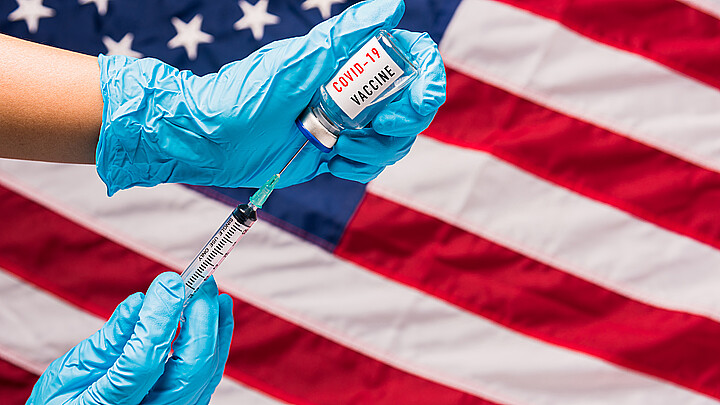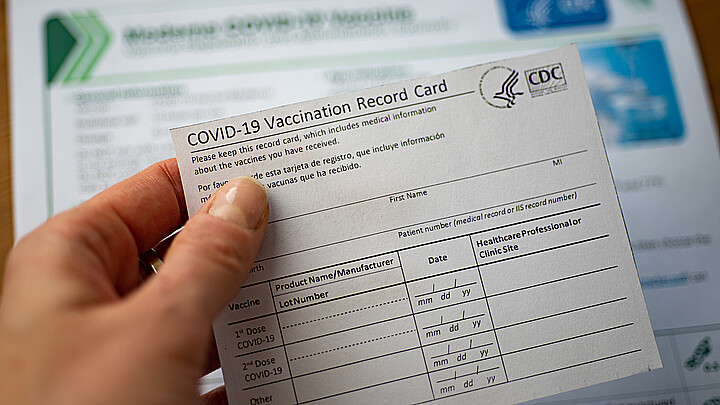Coronavirus
Amid growing criticism, CDC denies withholding vaccination data on COVID deaths, hospitalizations
While the agency emphasizes COVID vaccines and boosters substantially reduce hospitalizations and deaths, its own data are more complicated
March 30, 2022 8:55am
Updated: March 30, 2022 8:55am
For the first time since COVID-19 lockdowns were imposed, the CDC finds itself under sustained scrutiny from even presumed allies for the quality and timeliness of data it publishes and what it keeps hidden.
The agency recently removed tens of thousands of deaths attributed to COVID through a "coding logic error," including a quarter of pediatric deaths.
The CDC has only published "a tiny fraction" of its collected data, from booster performance in prime-age adults to "hospitalized patients stratified by age, sex, race and vaccination status," sources told The New York Times.
One reason is fear the data could be misrepresented, including on vaccine effectiveness, agency spokesperson Kristen Nordlund told the newspaper. Scottish public health officials gave the same rationale when the country stopped reporting COVID deaths by vaccination status last month.
Newly released public records show the agency refusing to share its "demographic vaccine data at the state level" a year ago, instead directing a Harvard public health researcher to see if the CDC's "state and jurisdictional partners" post the data on their website.
Even as the agency works to unify federal and state public health data systems through its Data Modernization Initiative, some critics have accused the CDC of actively squelching statistics that undermine its preferred narratives.
"The CDC is no longer releasing data comparing vaccinated vs unvaccinated deaths & hospitalizations," conservative writer Scott Morefield tweeted Saturday. "But don't worry. I'm sure it's just an oversight."
Nordlund told Just the News the agency is actually just working on a six-week lag with some data. Its most recent comparison of deaths used January data and wasn't released until mid-March, and the February deaths data will be released in mid-April, she said.
Its data tracker on cases and deaths, which covers 26 jurisdictions, has long emphasized that vaccinated and especially boosted individuals have better outcomes than the unvaccinated, though the data are more complicated. (Cases data run through mid-February.)
The January data show unvaccinated people ages 5 and up had a nine times greater risk of death than the fully vaccinated, and for ages 12 and up, 21 times greater than the boosted, though deaths fell sharply for all groups by the end of the month.
Cases across all groups also saw a steep plunge between early January and Feb. 19. The boosted even had a slightly higher positive rate per 100,000 than the vaccinated by the latter date.
The fine print notes that deaths include anyone with a "positive specimen" and that a person isn't considered "fully vaccinated" or boosted until at least 14 days after receiving the primary series or booster. Those who only had one mRNA vaccine dose were excluded entirely.
The tracker's death data are "real time and subject to change" because they are often incomplete, Nordlund said regarding the CDC's recent removal of 72,000 COVID deaths. The National Vital Statistics System is the "most complete source of death data," given its death certificate review process.
The CDC's "COVID-19-associated" hospitalization data by vaccination status are published more quickly, though they also cover just half the jurisdictions (13) as those reporting cases and deaths. The agency doesn't define "COVID-19-associated," and Nordlund didn't answer whether that includes COVID infections incidental to hospitalization.
Last week the agency posted hospitalization data through Feb. 26, showing that all children 5-11 and vaccinated 12-17 year-olds have a hospitalization rate under 1 in 100,000. Unvaccinated 12-17 year-olds (1.7) are comparable to boosted adults 18-49 (1.6). Unvaccinated 18-49 year-olds have a higher rate (8.7) than vaccinated 50-64 (5.7) but lower than even boosted individuals 65 and up (11.3).
None of the data includes relevant distinctions within each category, such as comorbidities and immune system condition. Unvaccinated groups are more likely to have medical conditions that make vaccination a higher risk for them.
The gap between unvaccinated and vaccinated has been closing since the Omicron variant emerged. The Epoch Times reported a month ago that vaccinated and boosted case rates jumped by 1,000 and 2,400 percent between Dec. 11 and Jan. 8.
Pfizer CEO Albert Bourla has admitted its vaccine offers "very limited protection if any" protection against Omicron infection, and even the booster is only "reasonable" against hospitalization and death.
Those who have recovered from the first version of Omicron, known as BA.1, appear to have substantial immunity against its second, BA.2, according to Denmark's State Serum Institute.
Among 1.8 million infections Nov. 22-Feb. 11 with BA.1, only 47 people had reinfections with the even more transmissible BA.2 between 20 and 60 days later, "mostly in young unvaccinated individuals with mild disease not resulting in hospitalization or death," the government research group said.










